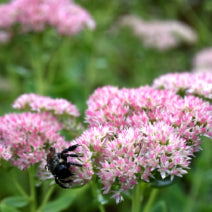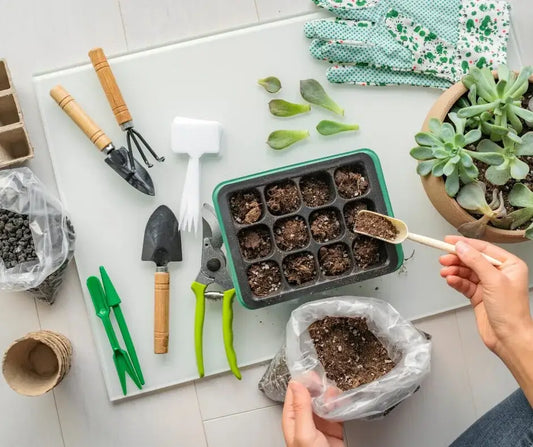
If we learned anything this summer, it was how to wield a watering can. Steamy and dry weather was the name of the game no matter where you garden. Meanwhile, we all tried our best to help our plantings survive through the season by taking water-wise routes. Smart moves make all the difference when the weather is not on your side. What you plant and how you manage your garden suddenly means the difference between life and death in your yard. So here’s a summary of takeaway pointers from the field…

Prep Your Beds
Nobody sees a drought coming early in the year. But no matter what the weather brings, building muscular soil is the smartest survival tactic for any situation. Invest in bags of soil-building compost such as Schoodic Blend Organic & Natural Composted Manure Blend or Quoddy Blend Lobster Compost to increase soil fertility and structure. More than feeding your soil, they create the consistency that will sponge up moisture in rain and help to prevent run-off. When every drop counts, soil structure is critical. Don’t hesitate to top dress midseason while replanting a raised bed, vegetable patch, or garden space. Your soil needs all the help it can get with body building.

Plant Early
Getting plants in the ground as soon as possible in early spring can be a game changer in a hot, dry year. In spring and early summer, temperatures tend to be more moderate allowing strong root establishment without stress for wee little seedlings. For any plant of any size, early planting helps to encourage roots to plunge downward. To encourage a head start, be sure to tease roots out of the initial rootball, coaxing roots to grow and seek deep moisture. After planting, water generously and often, especially for the first 2-3 weeks. Deep roots increase the chances of a plant’s survival in a drought. With early training, you can steer a plant into survival mode when weather turns nasty.

Plant Smart
Some plants have developed defenses to survive stressful conditions. Unless you have a moist situation, you’ll want to steer away from thirsty Joe Pye weed and frequently wilting hydrangeas. The last thing you need in a drought is a drama queen. Instead, plant perennial survivors such as beebalms, salvias, catmints, rudbeckias, hens and chicks, globe thistles (echinops), daylilies, rattlesnake masters (eryngium), milkweeds, sedums, alliums, honeysuckles, and sumacs. For areas prone to erosion, consider installing plants with roots that go downward to hold the soil, like liatris, little bluestem, and muhly grass. Select durable annuals such as cockscombs (celosias), cosmos, amaranths, and annual ornamental grasses, especially when growing in containers. And speaking of containers, shallow pots dry out quickly—give your plants plenty of root room.
Water Deep

The biggest mistake that gardeners make is to water lightly. Even if you briefly deliver a light daily sprinkling with a hose, you are encouraging plant roots to remain on the surface of the soil to grab that moisture rather than wandering downward to anchor the plant and find deep reservoirs of water. This is especially critical for new transplants when they settle into their adopted home. Because the soil surface heats up quickly in hot, dry weather, wilting will happen on a regular basis if a transplant is given quick, light drinks. Instead, a long soaking with a sprinkler or soaker hose is a wiser solution if possible (check to make sure that local watering restrictions are not in effect in a drought). Again, watering generously early in the season is the best strategy.
Mulch Can Make the Difference
When the weather is baking, a layer of mulch can keep the soil from heating up. Plus, mulch helps to retain moisture from irrigation or when thunderstorms deliver quick but fierce pelting rain. Fundy Blend Organic Enriching Mulch & Seaweed does a double whammy, delivering both nutrients and a blanket for perennial and annual flower beds. Spread Coast of Maine’s Red Cedar Mulch around the base of shrubs and trees to keep their roots cool, calm, and collected. There’s another advantage as well: Mulch creates a beautiful presentation, making your garden look photo ready. Not bad, in a middle of a drought.
Written by award winning author, Tovah Martin. Photos also taken by Tovah Martin. Find her books and more information on her website: tovahmartin.com.













